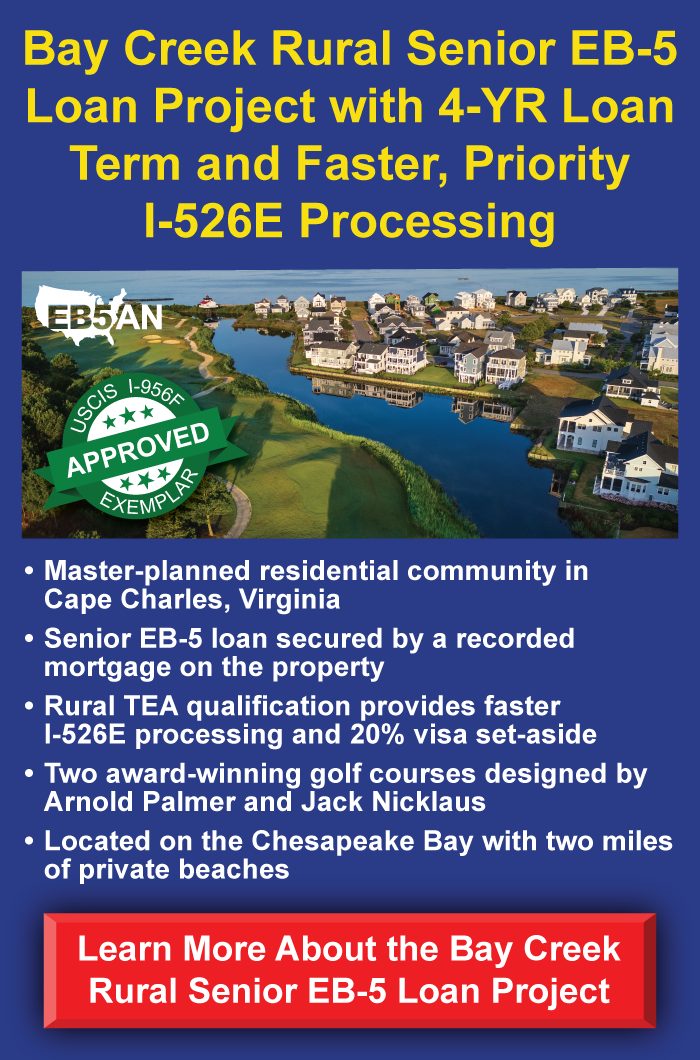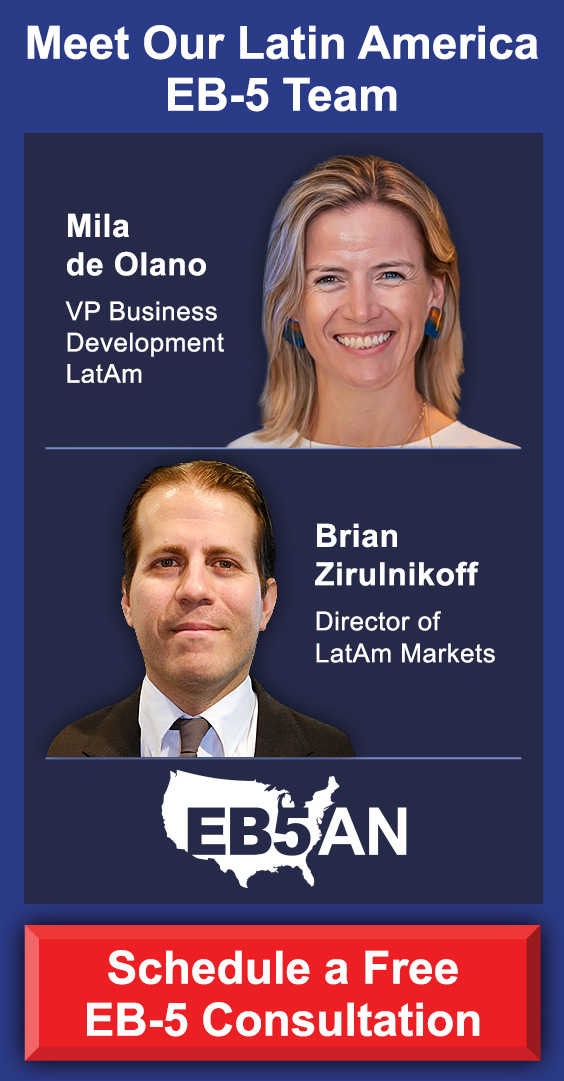The EB-5 Immigrant Investor Program is a good opportunity for foreign nationals to gain permanent residency in the United States. By making a financial investment in a U.S. business that creates jobs, investors and their families can qualify for a U.S. Green Card.
For those looking to expand their business opportunities, enjoy a better quality of life, and contribute to the economic growth of the U.S., the EB-5 visa is a great option.
Qualifying for an EB-5 visa might seem overwhelming at first, but it becomes more straightforward when broken down into manageable steps. This article will guide you through the process, explain how you can meet the program’s requirements, and highlight the main factors that will help you succeed.
Minimum Investment Requirements
No Stringent Background Requirements
The Importance of Job Creation
Proving Source of Funds
The Role of Regional Centers
How to Choose the Right EB-5 Project
The EB-5 Process: From Application to Citizenship
How EB5AN Can Support Your EB-5 Journey
Minimum Investment Requirements
The most important part of the EB-5 visa is the investment. You must invest a certain amount of capital into a U.S. business that meets the program’s requirements for job creation.
The minimum investment amount is $1,050,000—or $800,000 if the investment is made in a targeted employment area (TEA), which includes rural areas or regions with high unemployment rates.
The lower threshold offered by TEA projects makes them attractive choices for prospective investors. Be sure to check whether your chosen project qualifies as a TEA project.
No Stringent Background Requirements
An important aspect of the EB-5 visa program is that there are no stringent background requirements for applicants.
Unlike some other visa categories that might require applicants to meet specific professional or educational qualifications, the EB-5 program focuses on investment and job creation. This makes it a good option for the many foreign nationals seeking U.S. residency who either don’t meet the requirements of other visas, such as the EB-1 visa, or who don’t want to worry about the various backlogs these visas entail.
For EB-5, your main priority is making sure that your investment meets the program’s criteria and helps create jobs in the United States. This flexibility makes it one of the most accessible visa options.
The Importance of Job Creation
Job creation is the foundation of the EB-5 program. The U.S. government requires that your investment must create at least 10 full-time jobs for U.S. workers. The jobs can either be direct, indirect, or induced, depending on the project.
Direct jobs are those created by the business directly from the investment, such as construction or operational jobs. Indirect jobs, on the other hand, are those created by the broader economic impact of the project—for example, if you’ve invested the construction of a new hotel, indirect jobs could include suppliers or contractors whose services support the hotel. Induced jobs, meanwhile, are jobs created by the spending of the direct and indirect employees in the local economy, such as workers at nearby restaurants.
Most EB-5 investors choose to invest through regional centers—as opposed to a direct investment—which allows them to count indirect and induced job creation toward meeting the 10-job requirement. This makes it easier to fulfill the program’s job creation criteria.
Proving Source of Funds
One of the most important steps in the EB-5 process is proving your source of funds. In essence, you need to show that the money you invest was obtained legally.
United States Citizenship and Immigration Services (USCIS) requires full documentation to verify that your funds come from a lawful source, whether it’s from personal savings, business profits, investments, or even gifts.
The source of funds documentation process involves providing the following documentation:
- Bank statements and tax returns.
- Evidence of business ownership, if applicable.
- Sale agreements or contracts showing how the funds were earned.
- Any other financial records that prove the legitimacy of your income.
Gathering this information can take time, and it is a crucial step in getting approval for your EB-5 petition. USCIS thoroughly reviews the source of funds to make sure everything is legal and transparent.
Any issues with your source of funds can significantly delay your EB-5 application, so it’s vital to consult an experienced EB-5 immigration attorney when compiling and submitting your documentation.
The Role of Regional Centers
As mentioned above, a significant number of EB-5 investors choose to invest through a regional center.
Regional centers are U.S.-based organizations approved by USCIS to facilitate EB-5 investments. More specifically, they help manage projects that create jobs and encourage economic growth in targeted areas.
Investing through a regional center offers numerous benefits:
- Indirect job creation: Regional centers count both direct and indirect job creation, which helps fulfill the program’s job creation requirements more easily.
- Passive investment: When investing through a regional center, you don’t need to be actively involved in managing the project, which makes it a more hands-off investment.
- Proven track record: Regional centers typically have a history of success with EB-5 applications, which can increase your chances of approval.
If you are unsure about where to invest, speaking with an immigration lawyer or a trusted EB-5 expert can help you choose a reliable regional center.
How to Choose the Right EB-5 Project
When investing in an EB-5 project, it’s important to perform thorough due diligence to make sure the project will meet all the job creation and economic growth requirements.
Here are a few tips for selecting a strong EB-5 project:
- Review the project’s history: Make sure the regional center or project management team has a solid track record with USCIS-approved projects.
- Examine the business plan: Make sure the project clearly outlines how it will create the required 10 jobs and encourage economic growth.
- Evaluate the risk: Every investment carries some risk. Make sure the project has realistic financial projections and is backed by solid business strategies.
- Check USCIS approval status: Look for projects that are preapproved by USCIS, as this increases the likelihood that your investment will meet the program’s requirements.
The EB-5 Process: From Application to Citizenship
Once you’ve chosen a project and made your investment, the next step is filing Form I-526E, which is the EB-5 petition through a regional center. This petition includes details about your investment (such as your source of funds documentation discussed above), the project, and how it meets the program’s job creation and economic growth requirements.
Once you submit your petition, USCIS will review your application. If everything is in order, they will approve your petition, and you will apply for conditional permanent residency for two years. During this period, you have to maintain your investment and demonstrate that the job creation requirements have been met.
Then, 90 days before the end of this two-year period, you can file Form I-829 to remove the conditions on your permanent residency if the job creation requirements have been met.
Upon approval, you and your family will receive your unconditional Green Cards, making you lawful permanent residents of the United States.
After holding a Green Card for five years—starting from the date you receive your conditional residency—you will be eligible to apply for U.S. citizenship.
How EB5AN Can Support Your EB-5 Journey
Qualifying for the EB-5 visa is an achievable goal when you understand the program’s requirements and take the right steps. With the right investment, proof of your source of funds, and a strong project that encourages economic growth and job creation, you can successfully secure U.S. residency through an EB-5 visa.
Once you have a clear understanding of the EB-5 program and how to meet its requirements, it’s important to work with experienced professionals, like those at EB5AN, who can guide you through the process to make your experience as smooth as possible.
EB5AN has helped more than 2,700 families from 70+ countries relocate to the U.S. as lawful permanent residents. Our expert team brings more than a decade of experience, and we offer a portfolio of top-tier, low-risk EB-5 regional center projects with a 100% USCIS project approval rate.
If you’re ready to take the next step or have questions about how the EB-5 process works, feel free to book a one-on-one call with our EB-5 team.










